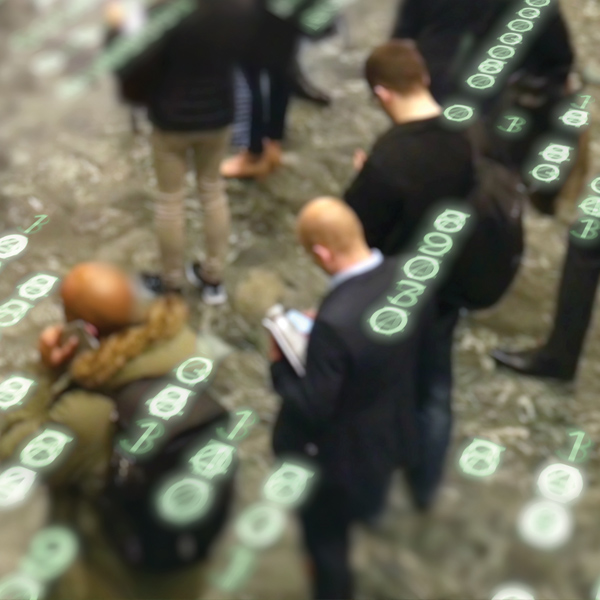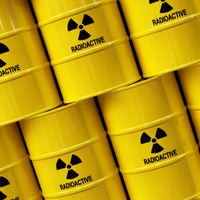I am pleased to add my welcome to the annual meeting of MacArthur grantees in the Science, Technology and Security Policy initiative. Norm Neureiter and the AAAS staff have put together an interesting and challenging program – just the right blend of sharing the results of research and talking about how to move that research into policy. Norm and Alan, we are deeply grateful for the work of the AAAS in providing the backbone for this initiative.
I very much enjoyed our meeting in Chicago last year, but this one promises to be more lively. We made a good decision to go beyond the Directors of the University Centers and Policy Institutions and include their colleagues as well.
I would also like to welcome our international partners, from Russia, China, Japan, the Republic of Korea, Australia, the UK, Germany, and Italy. Your participation significantly enriches our discussion and bodes well for international cooperation on the security issues we all face.
MacArthur’s goals with the STS Initiative are straightforward: to increase the number of mature scientists interested in security policy, to attract a younger generation, to strengthen university centers focusing on science and policy, and to make expert advice available to policy makers.
The results are encouraging. We see that new generation taking shape, concerned with the policy implications of advances in new fields such as cybersecurity, space science, nanotechnology, and new developments in the life sciences (including synthetic biology), as well as nuclear and biological weapons proliferation. By our last count, the initiative had engaged 18 scientists in policy-related work and provided support for more than 150 scientists at the graduate and post-doctoral level.
More important than the number is the work that you are doing. Let me cite some examples that caught my attention.
Charles Ferguson’s article of this April, “Nuclear Energy: Balancing Benefits and Risks,” offers a sober assessment of the role nuclear power can play in strengthening energy security and countering the harmful effects of climate change. The public debate on these issues is only beginning, but Charles’ work has helped establish a much-needed empirical basis for discussion.
He projects out the full dimensions of a nuclear solution to climate change – to maintain global carbon dioxide emissions at the levels of the year 2000 would require between 1,900 and 3,300 additional gigawatts of nuclear capacity. To achieve this, the world would need to open two new reactors every month for the next forty years.
I suspect that Charles’ work will be a reference point in the global conversation on the potential tradeoffs between global warming and nuclear proliferation.
The AAAS report The United States Nuclear Weapons Program, could not have been better timed. Made public in April, it provided a coherent argument that urged caution as the United States proceeds toward a Reliable Replacement Warhead, outlined its probable impact on the nuclear Stockpile Stewardship Program, and drew attention to how an RRW program could undercut international efforts to stem the spread of nuclear weapons.
Soon after, the House of Representatives passed the 2008 Defense Authorization Bill. This version of the Bill reduced funding for the RRW and called for the development of a comprehensive new nuclear weapons strategy before steps were taken to produce new warheads.
Another important contribution was Chris Chyba’s October 2006 article, “Biotechnology and the Challenge to Arms Control,” which proposed a “web of prevention and response” to minimize the dangers inherent in biotechnology advances, while maximizing the benefits. His expert evaluation of rapid technological change and the risks posed by misuse is compelling.
Chris points out that synthesizing the polio virus took a Stony Brook University team three years to complete in 2002. In 2003, a research group in Maryland manufactured a virus of comparable genomic length in just two weeks. Between 1990 and 2000, the speed of DNA synthesis had increased more than 500 times.
By contrast, multilateral arms control treaties can take a decade from their beginnings to their entry in force.
There is a glaring mismatch between the speed of scientific discovery and slow pace of treaty development. That imbalance puts a premium on self-regulation within the scientific community, and makes it more urgent that policymakers understand recent research trends and their possible consequences.
I could go on, but just these examples remind us that the important work you all are doing is making its way into both the public discourse and policy circles.
We are now at the mid-point of the life of the Science Technology and Security Policy Initiative. We are pleased with how it is evolving, but as we do with all our work, will undertake an outside independent review.
The review will help us understand whether we have been successful in creating a network with several inter-locking components, or whether we are mainly supporting good work that was already underway. It will also help us explore how to make the capacity you and we have worked so hard to develop sustainable when MacArthur’s funding diminishes. I hope you will freely share your views on these questions with us and with the reviewers, who are here with us today. Please welcome George Lopez, of Notre Dame University, and David Hart, of George Mason University.
We hope the review will give us an idea about how to strengthen the initiative over the next five years. While the STS program was conceived as a ten-year initiative, MacArthur will remain in the peace and security field. And we will welcome your thoughts about the next chapter in our work
As we think together about that next chapter, we see a global context with many elements in flux: new administrations in France and the UK, this year’s Party Congress in China, Russian elections next year, India on the verge of acquiring further unsafeguarded fissile production capacity, unresolved challenges in Iran and North Korea. At the same time, global networks of crime and terror, including the nuclear trade, remain a present danger. Perhaps most significant is the prospect for a change in direction in the United States.
It is essential that we have informed and thoughtful advice ready as new leaders take office and undertake a fresh look at enduring challenges. The period ahead will be critical as we get ready for a possible expansion in nuclear energy use world-wide, the NPT Review Conference in 2010, the expiration of the START Treaty in 2009, and the Moscow Treaty in 2012.
And we must also address gaps in our global security architecture, most pressingly in biotechnology, cyber-security, and in space. Policymakers look to you for possible frameworks, examples of best practices, and credible forecasts of the direction of scientific advances – and their good and dangerous implications.
I would like to think this mix of political change, immediate problems like Iran, the puzzle of safe expansion of nuclear energy, and persistent threat from global terrorism will provide a new urgency, and thus a new opening, for progress.
We have been through a period that had a defensive feel, a struggle to hold on to past gains, with progress hard to achieve.
The moment, I believe, is coming when the work you are doing will be much in demand by policymakers starting here in the U.S. We need to be ready with a clear definition of the issues, an assessment of the relevant science and technology, and crisp formulations of sensible policy options.
I was heartened by the unlikely coalition of George Schultz, William Perry, Henry Kissinger, and Sam Nunn who issued a clarion call for action in their January 4 op-ed in the Wall Street Journal. “What” they asked, “will it take to rekindle the vision of Presidents Reagan and Gorbachev for a world free of nuclear weapons?” These four statesmen are working together to develop a credible, politically feasible strategy comprising several elements for which they plan to seek support from a bipartisan base of leaders in the U.S., as well as in the P5, and other nuclear-capable countries worldwide.
We will be supporting this effort to move back the hands on the Bulletin’s doomsday clock.
Let this conference mark the moment when the largest gathering of top scientists seeking a safer, more peaceful world, started a new era of progress.
As President Kennedy said in his 1963 American University speech:
Let us examine our attitude toward peace itself. Too many of us think it is impossible. Too many of us think it is unreal. But that is a dangerous, defeatist belief. It leads to the conclusion that war is inevitable, that mankind is doomed, that we are gripped by forces we cannot control.
We need not accept that view. Our problems are man-made – therefore, they can be solved by man…. Man's reason and spirit have often solved the seemingly unsolvable – and we believe they can do it again.”
I look forward with great anticipation to this next exciting phase of our collaboration.
Thank you.




